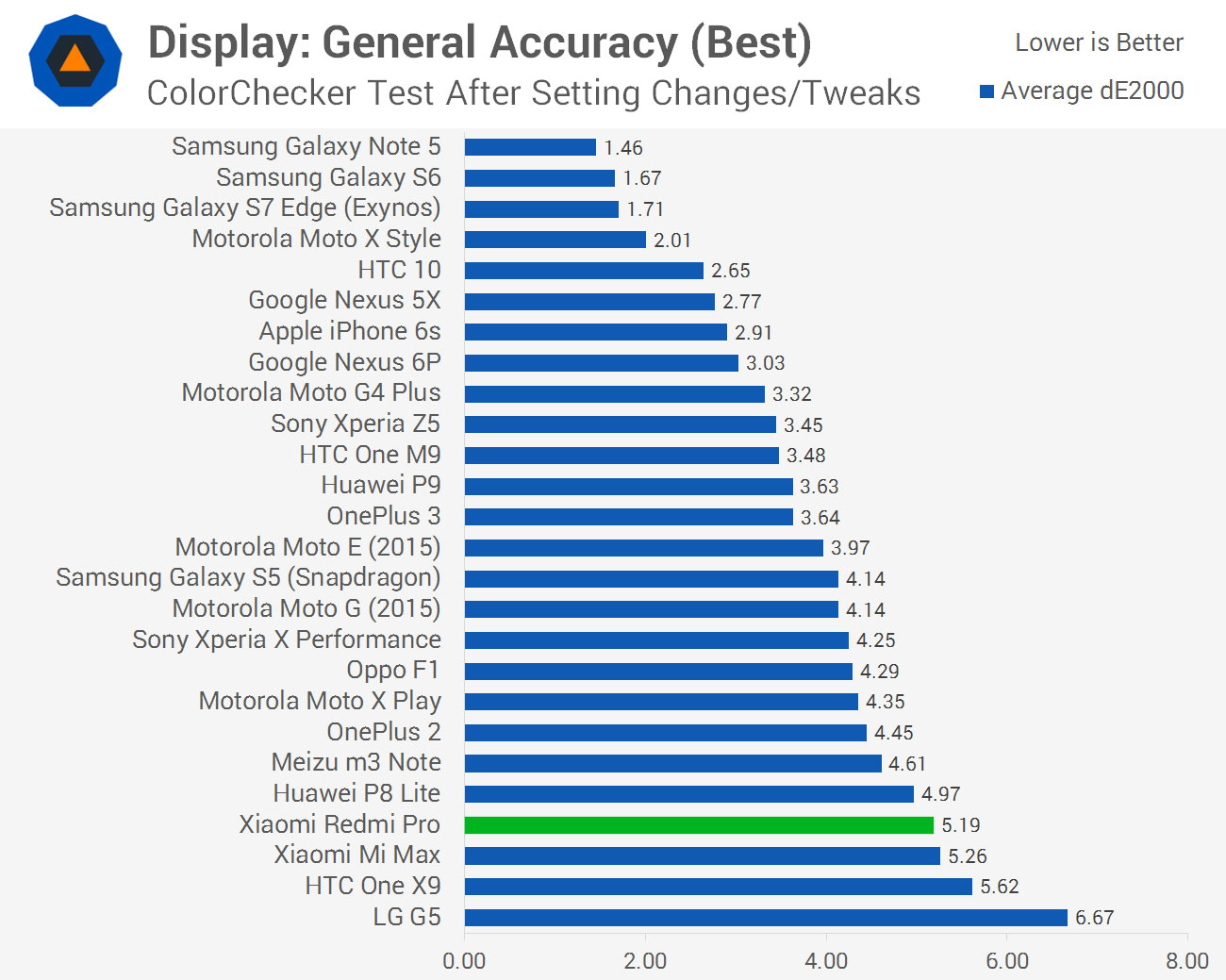Display: 5.5-inch AMOLED
The Xiaomi Redmi Pro packs a 5.5-inch AMOLED display with a resolution of 1920 x 1080, equating to a pixel density of 401 PPI. We're not seeing a flagship-class display here - top-end phones with displays of this size are often 1440p - but this phone is less than half the price. In any case, 1080p is perfectly serviceable at this size, and provides decent levels of sharpness.
The AMOLED technology that Xiaomi has opted for does have some benefits, most notably perfect black levels that lead to essentially infinite contrast. Viewing angles from AMOLEDs are typically excellent, however the Redmi Pro uses a number of filters between the display and glass that lead to significant brightness degradation at harsh angles.
I was disappointed by the maximum brightness of the 5.5-inch panel. At just 330 nits, the display falls well behind most other panels I've reviewed, and this can make it difficult to view the screen in direct sunlight. Around 330 nits isn't horrible from an AMOLED (you'll get similar standard performance from a Samsung phone), however the Redmi Pro lacks a brightness boost in sunlight to push it above 500 nits, which is a feature that Samsung phones contain.


I wasn't particularly impressed with color performance either. Like most AMOLED smartphones, the color gamut used here more closely matches 100% Adobe RGB than 100% sRGB. However, as Android doesn't have any form of color management, mapping sRGB images to an unmanaged Adobe RGB display leads to oversaturation. Android really needs color management tools to make better use of displays that can exceed the sRGB color space.
That's not to excuse Xiaomi here: they haven't focused on display accuracy here, instead opting to just leave the Redmi Pro with an oversaturated and generally inaccurate display. By default, the panel is too cool with a color temperature around 7900K, which leads to poor gray accuracy. The blue tint also hurts the performance of yellows, which can appear very slightly green at times, while greens themselves aren't as rich or accurate as I'd like.



Display performance can be improved marginally by switching the display from "automatic contrast" to "standard" in the settings menu. This pulls back saturation to within the bounds of sRGB, however it does little to correct the display's blue tint. This resulted in only a very small improvement to accuracy in my testing, and to be honest, if you're not getting an accurate display you may as well leave it on the default settings and enjoy a display that 'pops' in some conditions.
Xiaomi has also included a reading mode with the Redmi Pro, which adds a strong yellow filter to the screen to reduce eye strain while reading for long periods. This is a handy feature for reading, but can't and shouldn't be used to color correct the display. For creative professionals that demand a color accurate display, unfortunately the Redmi Pro does not provide this.

